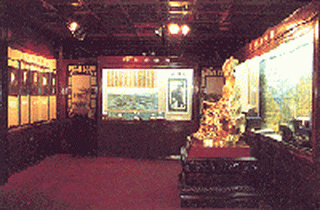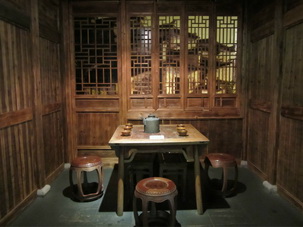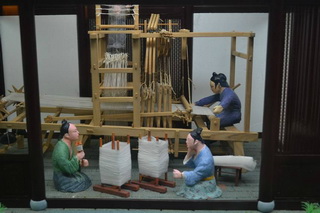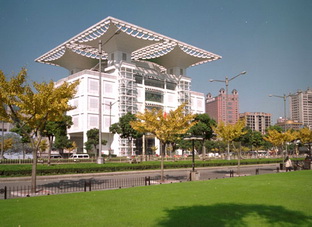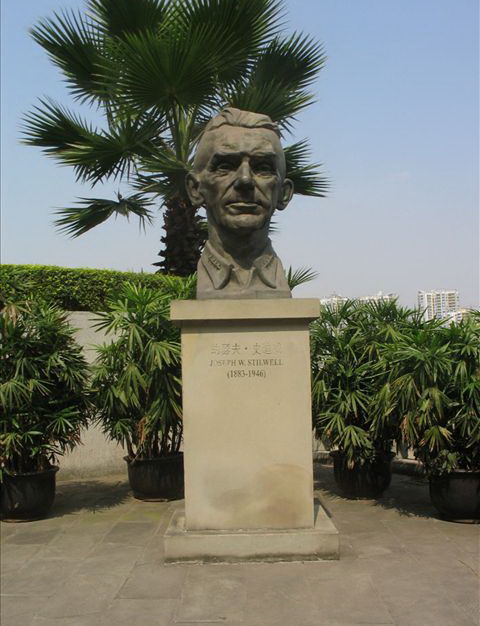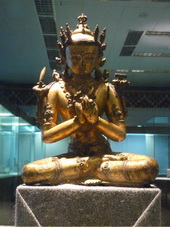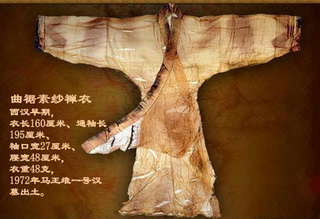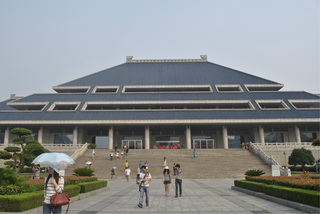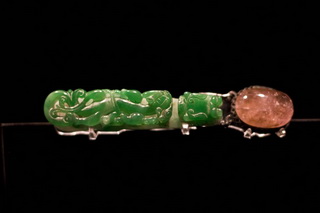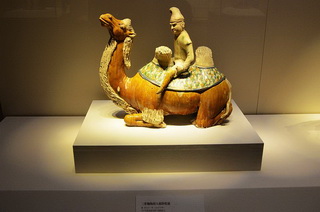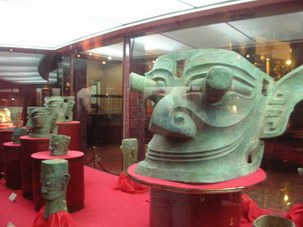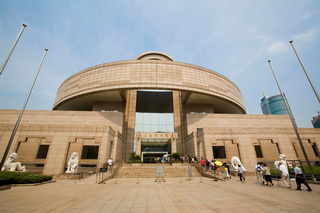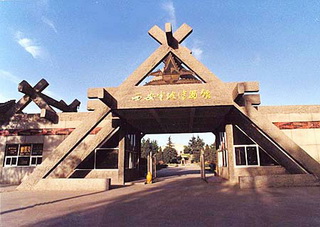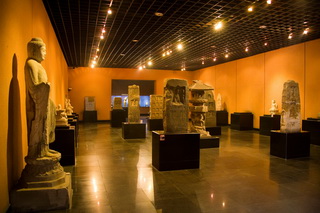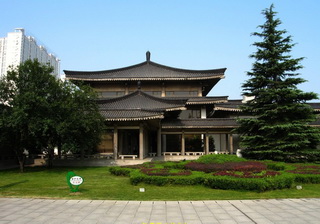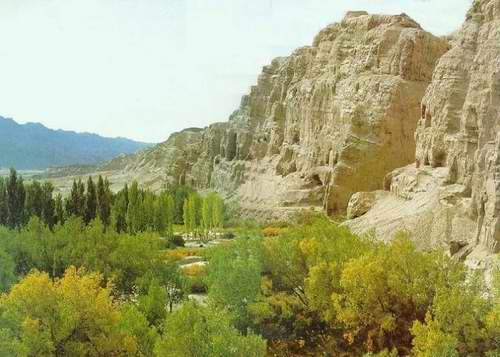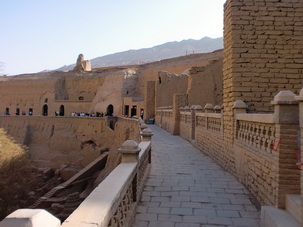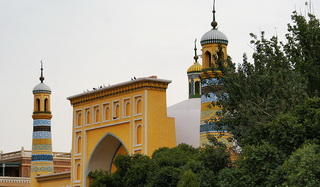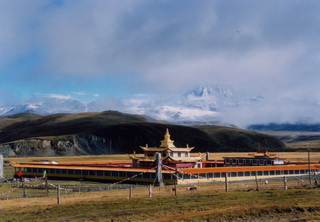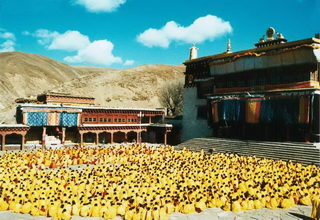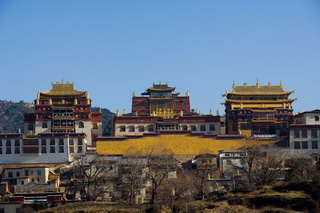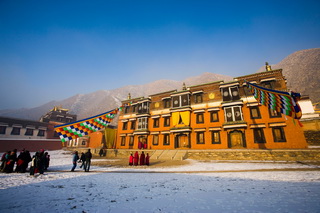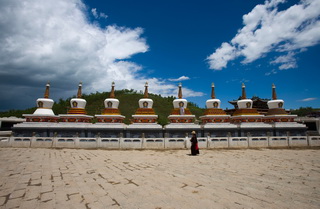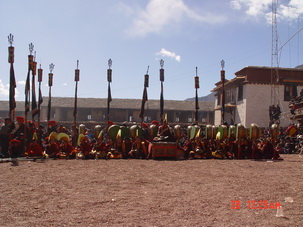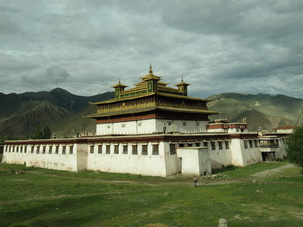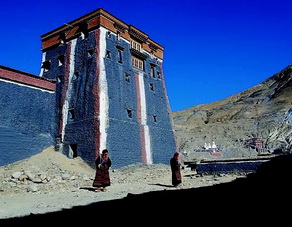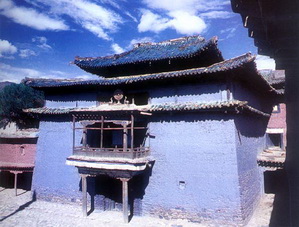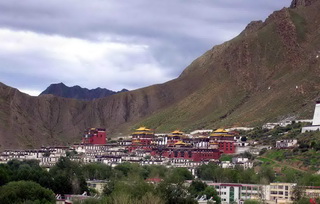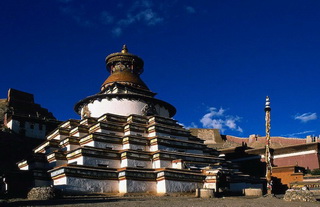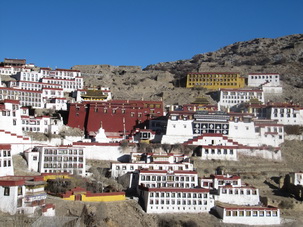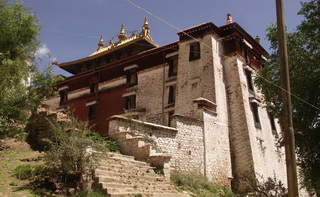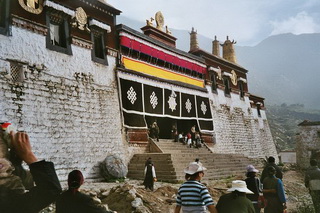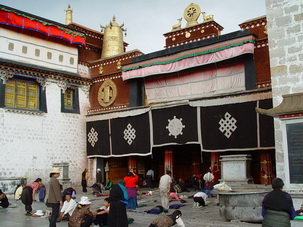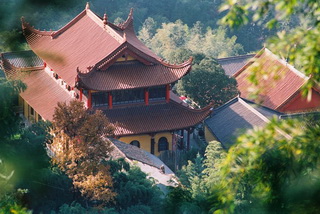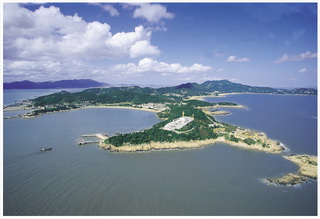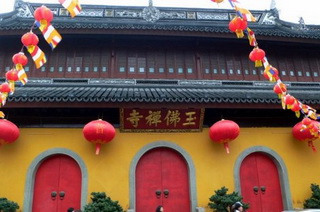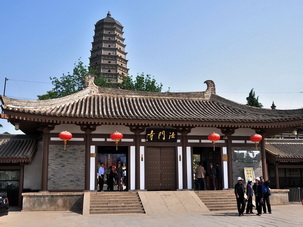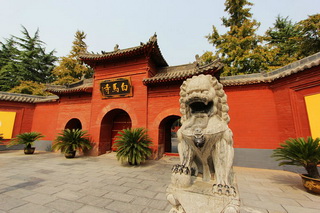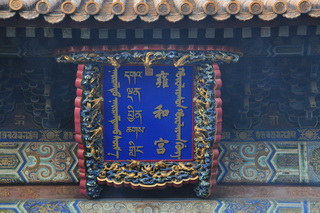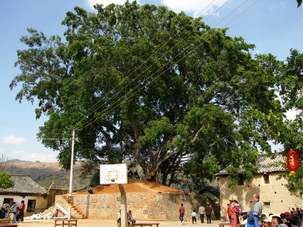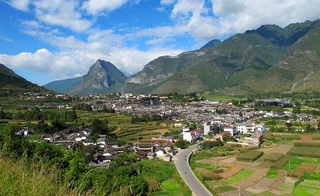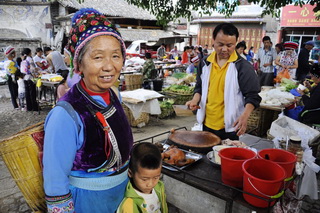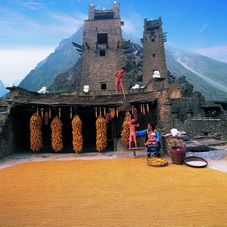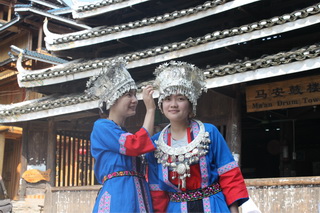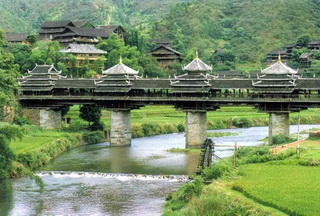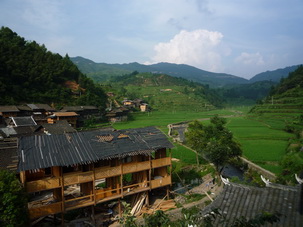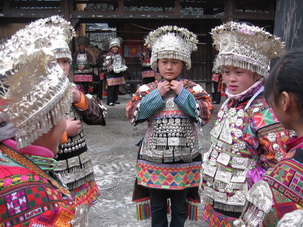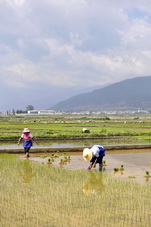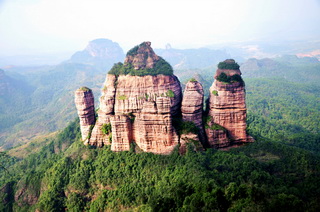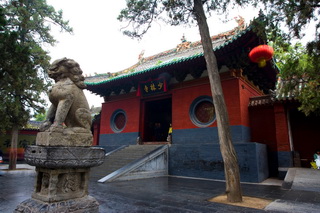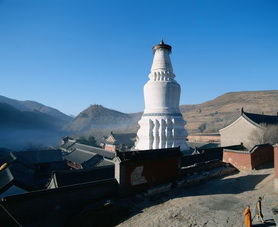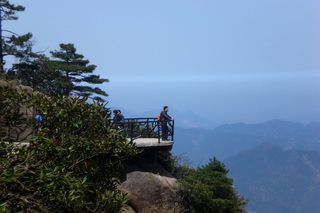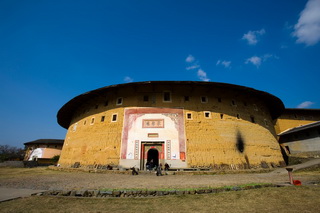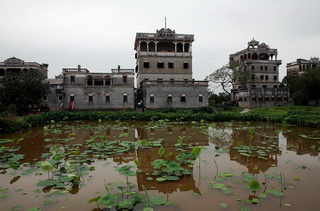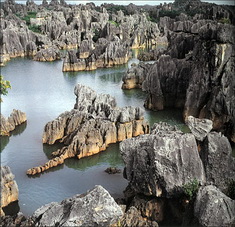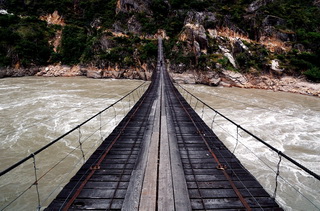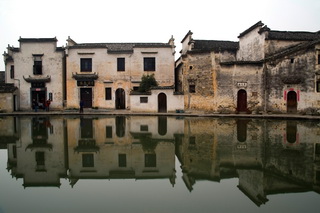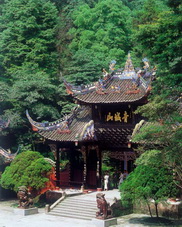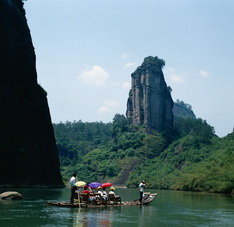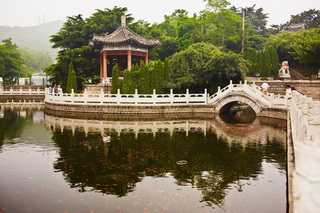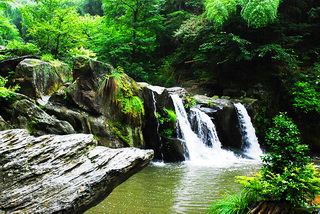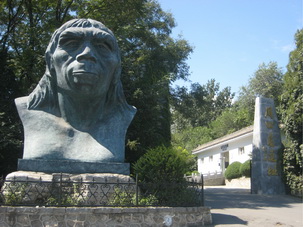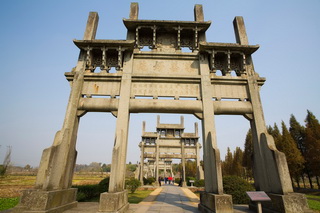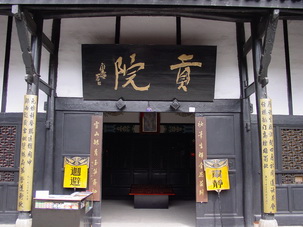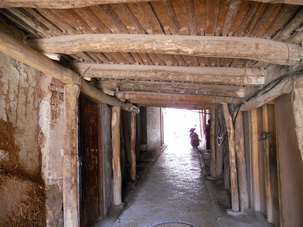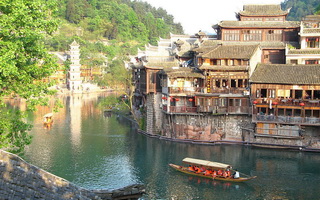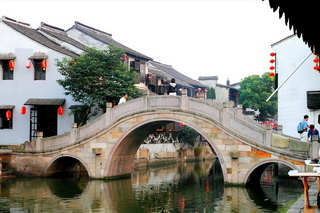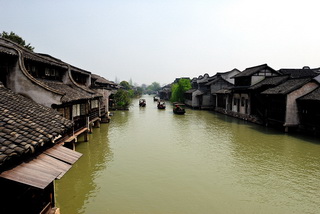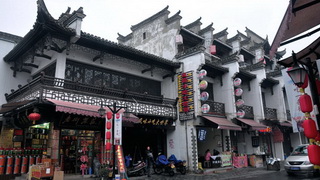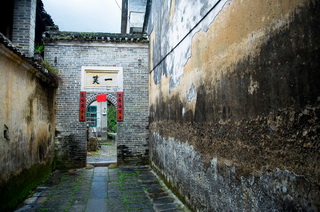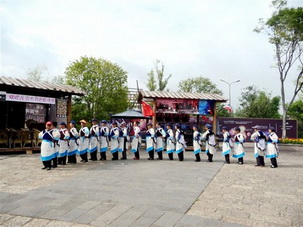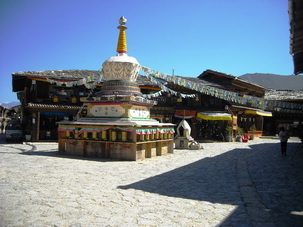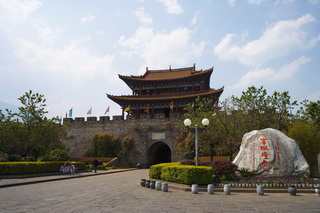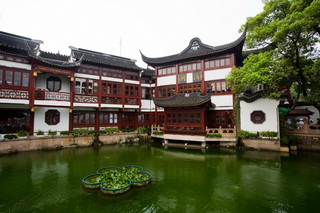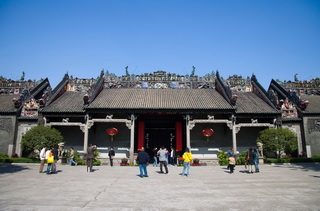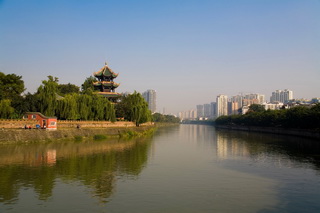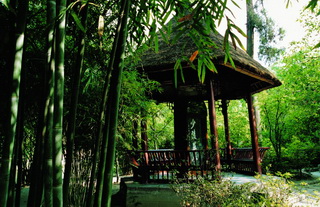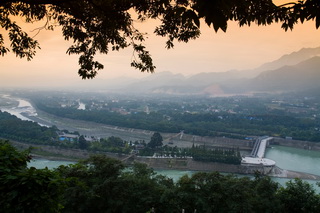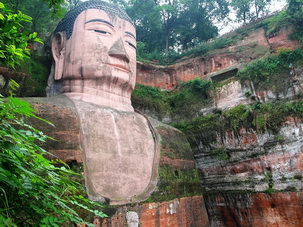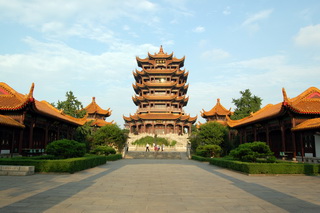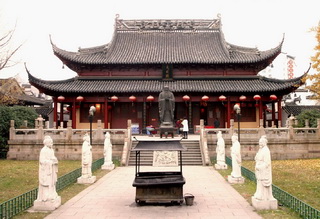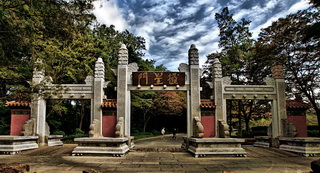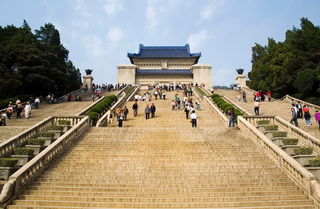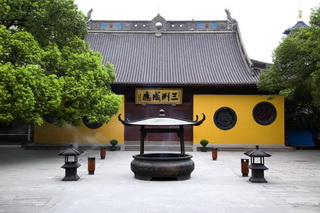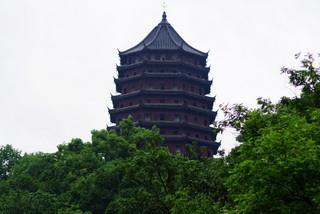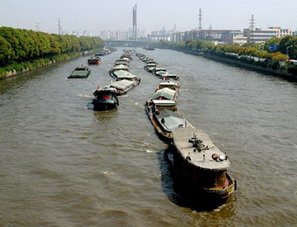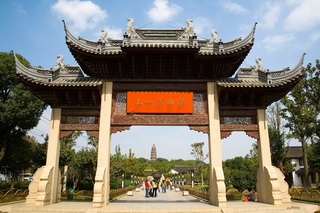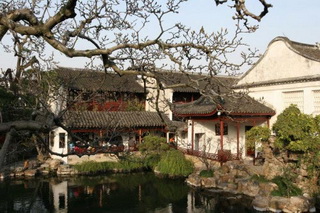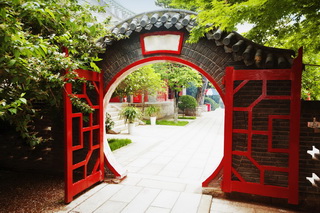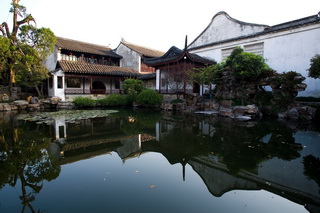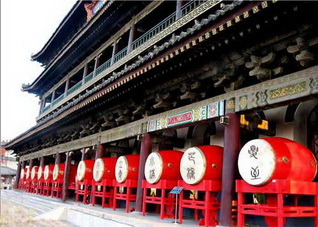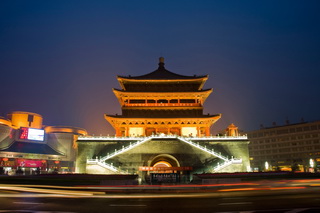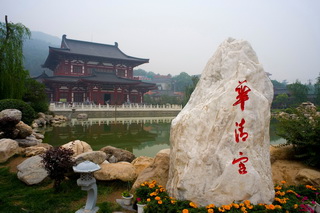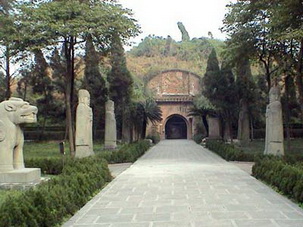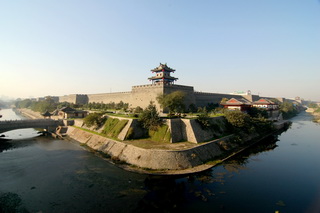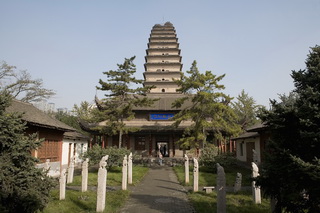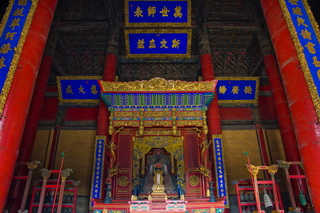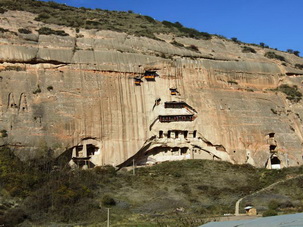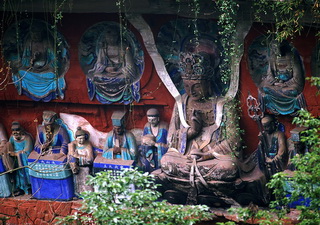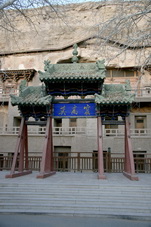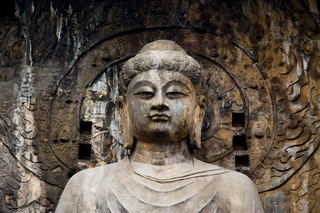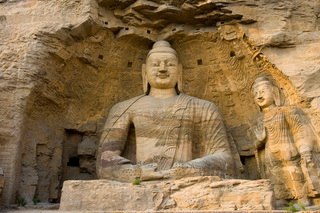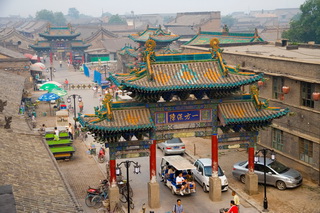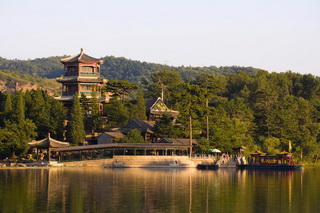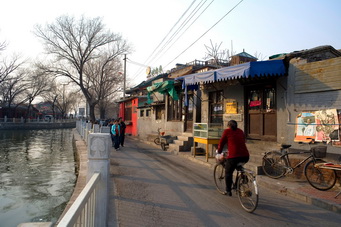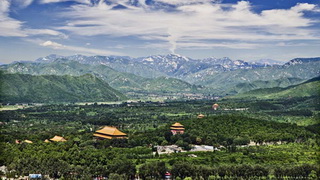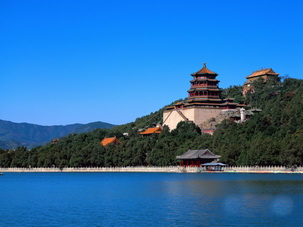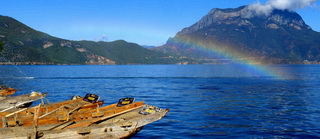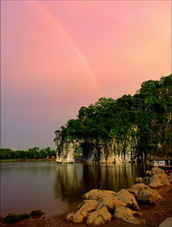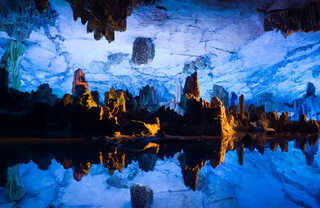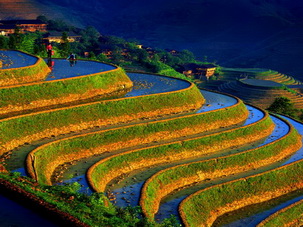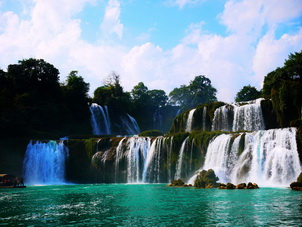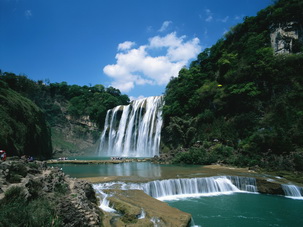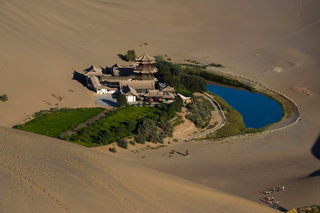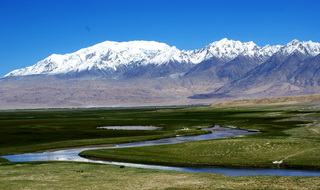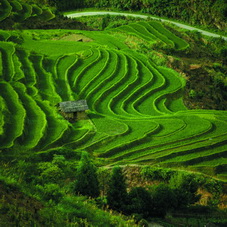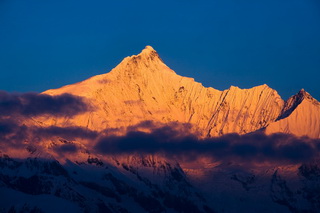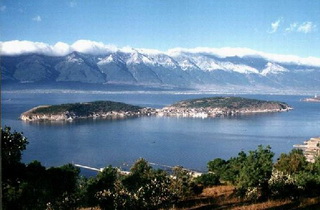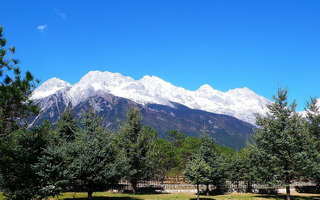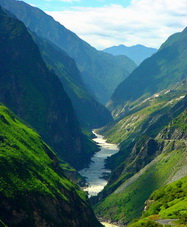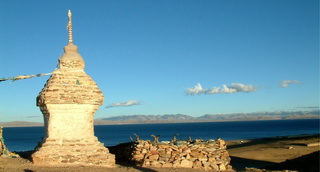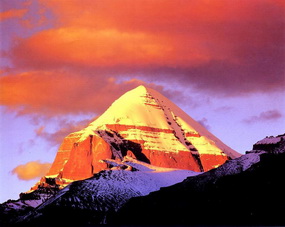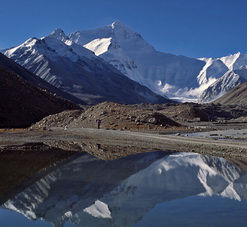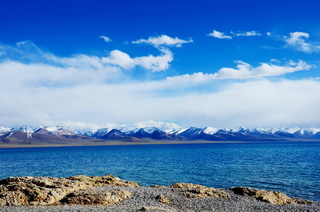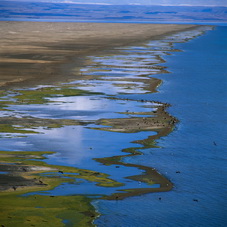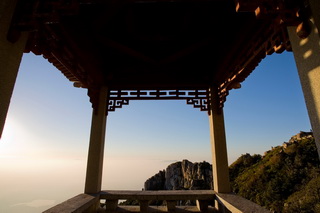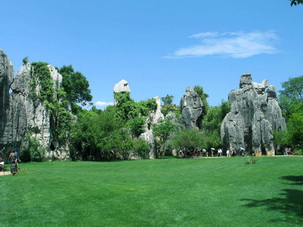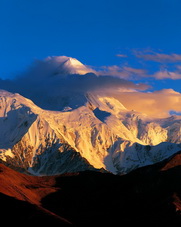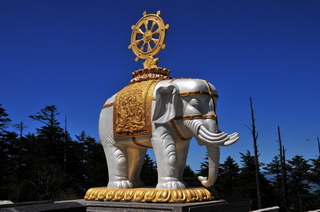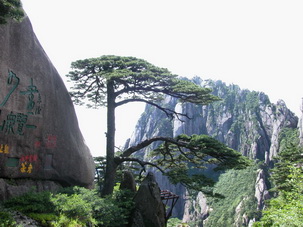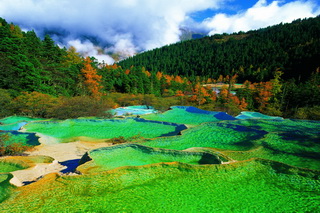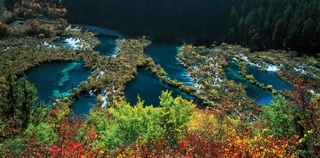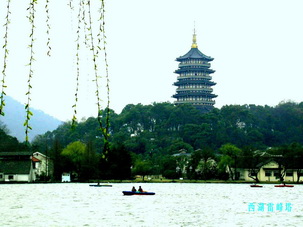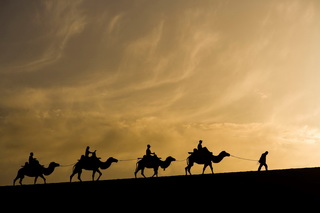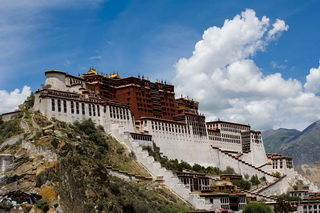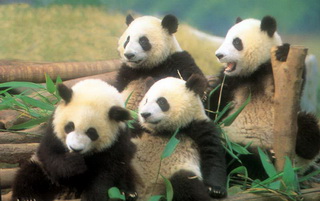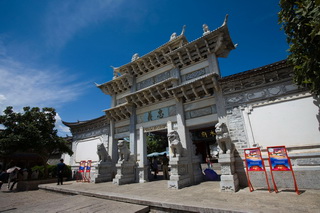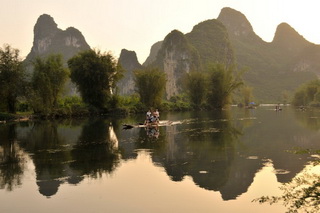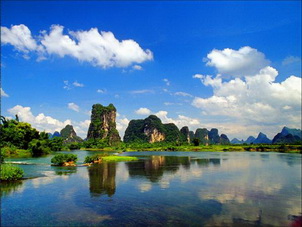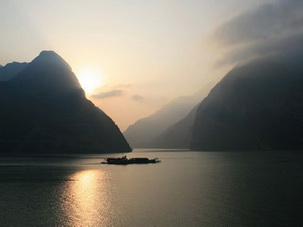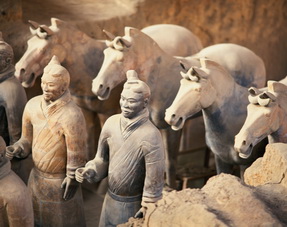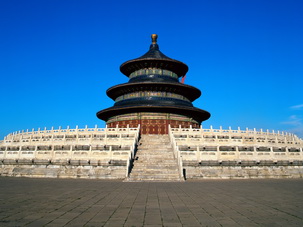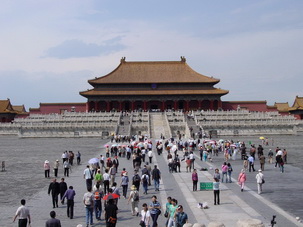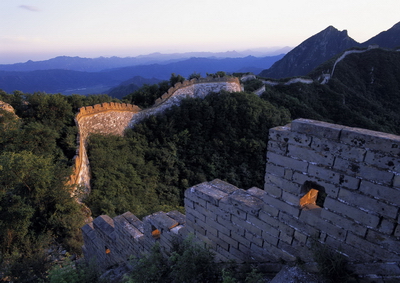
 China Tours
China Tours Tibet Tours
Tibet Tours China Theme Tours
China Theme Tours Off The Beaten Track
Off The Beaten Track Yangtze Cruises
Yangtze Cruises China Trip Planner
China Trip Planner Travel Agents
Travel Agents


We had a wonderful time in Tibet. We have learned a lot about this unique destination because of the wonderful guide Degyi who is so knowledge and always available towards our tours. We stayed at the Shangri-La Hotel Lhasa, and we would never imagine a Tibet travel could be so nice and amazing without the help of Degyi.
Also, thanks a lot to our Tibetan driver Mr.Wongdun for his safe driving and a good sense of service along the way.
We shall return Tibet in the near future!
P.B. and A. A - Europe
Tibet Travel
June 2018 (Private Tibet Journey from Kathmandu)

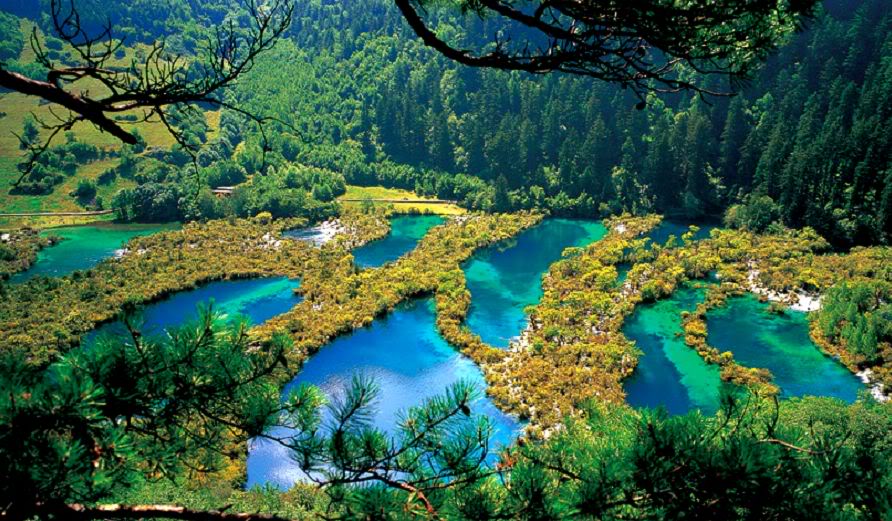
China Attraction Guide
China Attraction Guide collects details of most popular scenic spots in Beijing, Xi'an, Shanghai, Guilin, Chengdu, Hangzhou, Silk Road, Tibet and Kunming etc. This will assist you in gathering travel information to know more about China before your departure. You may get in touch with us to include any of these sights into your private China tour.
1. Top China Attractions 12
| The Great Wall of China | The Forbidden City | The Temple of Heaven | Terracotta Army, Xian |
| Yangtze River and Three Gorges |
Li River, Guilin |
Yangshuo, Guilin | The Bund,Shanghai |
| Lijiang Old Town | Giant Panda, Chengdu | The Potala Palace, Lhasa, Tibet |
Silk Road - Traces of Marco Polo |
2. Natural Wonders of China
3. Historical Monuments of China
4. Ancient Towns in China
5. UNESCO World Heritage Sites in China
6. Ancient villages - Traditions, Lifestyle & Folk Custom
7. China Religious Sites
8. Museums of China

Located in the western suburb of Jingdezhen City, It is a professional ceramic museum built in 1980, with a rich collection of over 5,000 articles. The items on display include ceramics from past dynasties, historical information about ceramics, precious collections of paintings and calligraphies, among which many are of excellent quality.
The earliest ceramics at Jingdezhen trace their history back more than 1,700 years, but the height of the fame and technology of Jingdezhen kilns came during the reigns of Kangxi, Yongzheng, and Qianlong in the Qing Dynasty.
The museum of Traditional Chinese Medicine is located in Dajing Lane at the foot of Wu Hill in Hangzhou. Besides its array of treasures documenting the unique history and development of traditional Chinese medicine, its traditional architecture and design will be of particular interest to visitors. More than simply a museum, it is also a living, functioning pharmacy where you can get a truly organic understanding of traditional Chinese medicine.
Established in 1991, China Tea Museum is the only national museum in China that takes tea as its theme. China Tea Museum is situated at the idyllic Longjing Tea Village in the beautiful West Lake Scenic Area. The museum displays tea's history, the various tea, tea events, tea sets and tea customs in China.
Located at the foot of Yuhuang Mountain, China Silk Museum covers an area of 48,000 square meters. The China Silk Museum aims at displaying the great achievement of China's silk industry and its splendid silk culture.
With its unique architecture, Shanghai Urban Planning Exhibition Hall is located on the east side of the People's Square, adjacent to the People's Park in the north. It is a grand and elegant white building, brimming with heroic Shanghai style.
The museum is the former residence of General Joseph W. Stilwell, who was chief commander of US forces in the China-Burma-India Theatre during World War II. In the past years, the museum has received more than 100 thousand visitors including the former Secretary of Department of Defense and former Secretary of State Mr. Kissinger.
Situated opposite the Chongqing People Hall, Chongqing Three Gorges Museum is not only the largest monographic museum in China, but also a public undertaking for the preservation, education, scientific research in respect of cultural relics and the natural environment of Chongqing and the Three Gorges area.
The grand new museum in the west of Lhasa just opposite to the Norbulingka, Tibet Museum is a good place to gain a bit more information on Tibetan history.
Hunan Provincial Museum was established in 1950s in Kaifu District of Changshan City, the provincial capital of Hunan Province, and near to Martyr Memorial. Hunan Provincial Museum is the largest comprehensive museum of history and art as well as the national patriotic base for education. It is also one of the best tourist attractions in Hunan province. Museum has diversities of cultural and historic collections, particularly famous for its relics of Ma Wang Du Mausoleum of Han Dynasty, The Bronze Wares of Shang and Zhou Dynasties, The Cultural Relics of Chu Kingdom, Porcelains of Dynasties, Modern Cultural Relics as well as the Works of Calligraphy and Painting.
Located on the bank of beautiful East Lake, Hubei Provincial Museum was established in 1953 and covers an exhibition area of 2,400 sq meters (0.59 acres). The museum boasts of having great musical instruments collections, bronze wares and lacquer wares.
The Capital Museum, located at 16 Fuxingmenwai Avenue, Xicheng District, Beijing, was opened in 1981 while the present building was built in the late 90s. The Capital Museum today contains over 200,000 cultural relics in its collection, only a small fraction of it are exhibited, and a significant percentage of the museum's art collection came from artifacts unearthed in Beijing.
The National Museum of China is located on the east side of Tian'an Men Square in Beijing. It is the largest comprehensive history museum in China. Through display of both material and non-material collections and exhibits, it narrates the history created by the ancestors of the Chinese people.
Discovered in February, 2001, the Jinsha Site was the most significant archaeological discovery in the 21st century in China. Thousands of gold plates, jade articles, stone wares, bronze wares and ivories of Kingdom of Shu (221 - 263) are discovered form the site. Among them the Holy Bird is the most famous one that has become the sign of China Cultural Heritage.
Sanxingdui is the name of an archaeological site and its deduced culture in China, now believed to be the site of an ancient Chinese city. The Sanxingdui Ruins, lying at Nanxing Town, Guanghan City in the north of the Chengdu plains, Sichuan is 8 kilometers to the west part of Guanghan proper.
The Shanghai Museum contains more than 112,000 Chinese cultural relics from the Old Stone Age to modern times, including bronzeware, calligraphy, paintings etc. There are at least a handful of interesting Shanghai museums to visit, and among the best is the Shanghai Museum of Art.
Located on the eastern outskirts of Xian, the Banpo Museum is the first on-location prehistoric relics museum in China. The Banpo Site is a typical Neolithic matriarchal community of the Yangshao Culture dating back about 6,000 years. At that time, the Banpo people used tools made primarily of wood and stone. Women, the crucial labor force, were responsible for making pottery, spinning, and raising the family, while men fished.
The Xi'an Stone Steles Museum is an art treasure-house with the oldest and richest collection of steles in China. It is not only one of the centers of ancient Chinese stone-engraving classics, but also the focus of the works of art of celebrated calligraphers of past dynasties. The numerous standing steles resemble a forest, hence the name; Steles. With a history of almost 900 years, it is an art gem renowned at home and abroad.
Shaanxi Historical Museum was built from 1983, and was finished on June 20th, 1991 and open to the public. The museum has an area of 65,000 square meters, building place 55,600 square meters, cultural relics storerooms of 8,000 square meters, exhibition halls of 11,000 square meters with a collection of 370000 pieces of relics. The museum is an architecture of Tang style, "Hall in center, storied buildings in corners", elegant and dignified, magnificent scale, combination of traditional architecture and modern science, which completely embodied folk tradition, local feature, and epoch spirit.
Kizil Thousand-Buddha Caves is the earliest Buddhist art treasure trove in China, even one century earlier than the famous Mogao Grottoes. As fundamental historical remains of West Region art or Chinese Buddhist art, Kizil Thousand-Buddha Grottoes is situated at the Kizil Township which is 67 kilometers southeast of Baicheng County and 73 kilometers west of Kuqa city. It is the largest grottoes located in the west part of China which was started excavating in the 3rd century (at the end of Eastern Han Dynasty) and lasted for 500 years. The Kizil Thousand-Buddha Caves are considered to be art crystallization of the local tradition and of the central Chinese culture as well as foreign ones. This priceless encyclopedia of Qiuci culture depicted in the caves surely is surely worthwhile reading.
Located at northwestern side of the Flaming Mountain - 45 km from Turpan, the Bezeklik Thousand Buddha Caves are complex of Buddhist cave grottos dating from the 5th to the 13th centuries. These caves were built on a cliff face fronting a river valley. In the Uigur language Bezeklik means place where there are paintings. These caves are one of the largest Buddhist grotto sites in Xinjiang. It used to be an important center for Buddhist worship under the Xizhou Huigu government of Gaochang Kingdom, which built the royal temple of the King of Huigu at this site. The caves are well hidden and rest on a long ridge overlooking a valley where the monastery was located. Originally it is accessible via a winding pathway to the cliff top, and a steep stairway led down to the monastery 30 feet below.
The Id Kah Mosque is the largest mosque in China. The mosque was built by Saqsiz Mirza in 1442 (although it incorporated older structures dating back to 996) and covers 16,800 square meters. At midday on Fridays around 10,000 people will gather to pray and study the Koran, and prayer 5 timesday on other days. You'll be asked to remove your shoes before entering the Main Hall of the Id Kah Mosque, which has traditional Islamic pillars, carvings and rugs strewn over the floors. Women are advised to cover upper arms and legs. A scarf is not compulsory, but is seen as a mark of respect.
Tagong Monastery is a famous Nyingmapa monastery built in the Qing Dynasty (1644-1911) to commemorate the Han Princess Wencheng and Phags-pa, the Grand State Tutor of Tibetan Buddhism with Buddhism Institute inside, also named as "the small Lhasa Jokhang Monastery", is one of the 108 temples built during the reign of Songtsen Gampo in ancient Tibetan times.
The monastery is just on the slope 1km north of town and belongs to the Gelupa (yellow-hat-sect) Tibetan Buddhisms. Founded in 1580 by the 3rd Dalai Lama Sonam Gyatso.
The Songzanlin Monastery, often called Ganden Sumtseling Monastery or Guihua Monastery, is located at the foot of Foping Mountain near Shangri-La County in Yunnan Province. The monastery was built on a hillside and looks like an ancient fort. The Songzanlin Monastery is often called as the little Potala Palace because of its traditional Tibetan architectural style. The two main halls of the monastery are magnificent and feature colorful frescos depicting Buddhist stories on the interior walls.
Located in the northwest of Xiahe County, Labrang Monastery was built in 1709 and is one of the Six Gelugpa Temples. Labrang Monastery was known as having 108 genera temples, and was considered as the center of the civil religion. It has preserved the best Buddhism teaching system at present. In 1982, Labrang Monastery was list as the key Cultural Relics Protection Site.
Sitting approx 27km southeast from Xining, Ta'er Si , also known as Kumbum Monastery in Tibetan, is acknowledged to be one of the six most important monasteries along with the Ganden, Sera and Drepung monasteries in Lhasa, the Tashilhunpo Monastery in Shigatse and the Labrang Monastery in Xiahe. Although not nearly as attractive as Labrang, and rather swamped by local tourists, Ta'er Si is nevertheless a good introduction for outsiders to Tibetan culture. Both as the birthplace of Tsongkhapa, the founder of the Yellow Hat Sect , and as the former home of the current Dalai Lama, the monastery attracts droves of pilgrims from Tibet, Qinghai and Mongolia, who present a startling picture with their rugged features, huge embroidered coats and chunky jewellery.
Overlooking the town of Chamdo, the monastery of Chamdo Jampa Ling (chab mdo byams pa gling) is situated on a hill above the confluence of the rivers Dza Chu (Mekong) and Ngom Chu. It was founded as one of the earliest Gelugpa institutions apart from Ue-Tsang. A local legend has it that when Tsongkhapa traveled from Amdo to central Tibet and came through Chamdo in 1373, he predicted that the Buddhist Doctrine would thrive there one day. This prophecy came true some seven decades later, in 1437, when one of Tsongkhapa's disciples named Jangsem Sherab Sangpo laid the foundations for a big lamasery.
Samye Monastery is at the foot of Mt. Haibusi, on the north bank of the Yarlung Tsangpo River in Jialang County. Being the 1st monastery, belongs to the Nyingmapa and Sakyapa Sects., was built in 761. The 5th Tobu King Chisong Duosan sent envoys to Kashmir and India to invite famous lamas to teach Buddhism in Tibet. It is said that the monastery was destroyed by fire and was rebuilt three hundred years as the residence of the 6th Dalai Lama.
The Sakya Monastery located in Sakya County, stands in the southern and the northern, two parts on either side of Dongchu River. This monastery is the centre of the Sakyapa Sect (White Earth Order).
The monastery is around 19km south-east of Shigatse, a few kilometers off the Shigatse-Gyantse road and is easily spotted because of its Chinese-style green tiled roof.
The Tashilhunpo Monastery, the biggest Gelugpa monastery in the Tsang regions of Tibet, sprawls on the slope of Mt. Niser, south-west of Shigatse. Tashilhunpo is associated with the Gelugpa order and is one of the six great Gelugpa institutions along with Drepung, Sera and Ganden in Lhasa and Kumbum and Labrang in Amdo. It is probably the largest functioning monastic institution in contemporary Tibet and is an impressive place to explore.
Built in the 15th century and situated in the northwestern edge of Gyantse, Pelkor Monastery is the only one large building complex in Tibet that old monastery and stupas are completely preserved and characterized as a monument.
In Dagze County 60 kilometers to the east of Lhasa, it is one of the three great monasteries in Lhasa and one of the six great monasteries of the Gelug Sect. Gandan means happiness and contentedness in Tibetan.
Lies at the foot of a mountain in the northem outskirts of Lhasa. It was founded in 1419 by Jamchen Choje, one of the eight disciples of Tsongkhapa, the founder of Gelugpa Sect, covering an area of 114,964 square metres.
About 8 km to the west of central Lhasa, Drepung was once the world's largest monastery, with a population of around 10,000 monks. The word Drepung literally translates as rice heap, a reference to the huge numbers of white monastic buildings that once piled up on the hillside.
Situated in the centre of the old section of Lhasa, Jokhang Temple was built in the mid-7th century A.D. and later extended by successive rulers; it has now become a gigantic architectural complex. Located in the east, facing to the west, it is a four storied temple with splendid golden roofs.
Mountain Jiuhua is one of four famous Buddhist Mountains in China, which is the first batch of key national scenic spots. It lies in the southeast of Chizhou City, Anhui Province. At the northwest is opposite Tianzhu Mountain separated by Yangtze River and at the southeast is opposite Mountain Huangshan separated by Taiping Lake. They are the northern main entrance and scenic spots of Golden tourist area, whose total area occupies 120 square kilometers and the scope of protection is 174 square kilometers. The Jiuhua Street lies in the center situation. Its east longitude is 117 centigrade and north latitude is 30 centigrade. Now Jiuhua Mountain is the state-level tourism zone and national civilized tourist area. It is known as the international Buddhist temple.
One of the Four Sacred Mountains of Chinese Buddhism, Putuo Mountain is one of the larger islands belonging to the Zhoushan Archipelago, a group of in all some 1400 islands located at the mouth of Hangzhou Bay, not far from Ningbo City, in eastern China's Zhejiang Province. Putuoshan is home to the most famous Guanyin Temple in all of China (Guanyin is the Goddess of Mercy and the patron saint, as it were, of seafarers).
As Shanghai's most popular temple with visitors, the Jade Buddha complex has an exceedingly short history, having been completed in 1918, but it exudes a powerful potion of thick incense, flashy decorations, and a dark, seedy atmosphere that makes it seem centuries older. The architectural style comes from the Song Dynasty (A.D. 960-1279), when swirling eaves were the style; the brilliant yellow walls are of recent origin.
Situated some 118 kilometers (73 miles) west of Xian, the Famen Temple will appeal to travelers who are journeying west to explore the ancient Silk Road. The temple gained the name Famen (which means the initial approach to become a Buddhist believer) in the Tang dynasty when a wooden four-storey structure was built replacing the original Ashoka Stupa built in the Eastern Han dynasty.
The White Horse Temple (Baima Si) in Luoyang, Henan Province, was the first Buddhist temple in China, established by Emperor Mingdi in the year 68 AD. The historic, leafy site features several ancient buildings and a highly devotional atmosphere.
The only temple in Beijing to have its own subway stop, the Yonghe Lamasery, or Yonghegong,or lama Temple is the most handsome and impressive Buddhist temple in the city. Lama Temple ( Yonghe Lamasery ) was built in the 33 Qing Kangxi year (1694) and it is now the largest and best-preserved Lamasery of Yellwo Sect in Beijing. It was the residence of Emperor Yongzheng before his ascending to the throne. Built initially in 1694 during the Qing Dynasty, this building was the residence of Emperor Yongzheng when he was just a prince. However, in 1744 the Qing Dynasty formally changed the status of the dwelling to that of a lamasery, and so Yonghe Lamasery became the national centre of Lama administration.
Tuanshan village is a rare surviving example of a traditional walled Yunnan village compound in southwestern China. Although it was founded as a mining center at the end of the fourteenth century, most of Tuanshan's well-preserved residences, gateways, temples, ancestral halls, and walls date from the nineteenth and early twentieth centuries, when the village prospered as a result of expanded trade with southeast Asia, made possible by the Yunnan-Vietnam railroad. Modest exteriors mask a wealth of exquisitely carved wood latticework; intricate wood, stone, and brick reliefs; and painted decorations that survived the tumult of the Cultural Revolution due to Tuanshan's privileged political connections to the Communist Party at that time.
Shigu is 50 kilometers from Lijiang. It was named after a stone tablet in the shape of a drum. Shigu in Chinese is Stone Drum.The Jinsha River does a U-turn at Shigu Town and flows northward, Then it changes the direction and goes to the northeast. The curveture of this turn almost reaches a 140 degree of angle. It is the First Bend of Yangtze River known throughout the world.
Zhoucheng Village is the largest and the farthest northern village of Dali City. The village has 7,571 inhabitants of 1,470 families. The entire village is in a square shape with row upon row of houses. The Yunnan Tibetan highway stretches across the village. Situated at the foot of Cangshan Mountain, the village is not far from the Butterflies' Fountain and Erhai Lake.
Taoping Village lies 170km west of Chengdu, home to the nomadic Qiang ethnic minority. The village is known as the "Ancient Oriental Fortress" for its aged stone houses and the two 9-storey hexahedral watchtowers of 30m high on the slope, which amazingly survived weather erosion, wars and frequent earthquakes for centuries.
The remote mountain valley region where Guangxi, Guizhou and Hunan provinces meet constitutes the traditional homeland of China's Dong nationality. Sanjiang, which lies in the very meet point of the three provinces, is comprised of five national minority groups Dong, Zhuang, Miao, Yao and Han.
Chengyang Wind and Rain Bridge is the largest and the best amongst them. Chengyang Wind and Rain Bridge, also known as Yongji Bridge or Panlong Bridge, was built in 1916. It is 64.4 meters long, 10.6 meters wide and 10.6 meters high. Completely made of wood and stone, it is one of the most magnificent wooden architectural structures.
Zhaoxing is the home to Dongs (one of minorities in China) who are talented architects for wooden structures. These people are also good dancers and singer. The town is located in Liping County, southeast of Guizhou province and one of the biggest Dong villages. Zhaoxing is surrounded by mountains and built in basin, which consists of 5 villages (Ren, Yi, Li, Zhi and Xin). The population is around 4000 with about 800 families. It is quite a surprise to find that after centuries of existence, it is still preserved as its original appearance.
Kaili is the gateway to the minority areas of southeast Guizhou and also is regarded as home to hundred festivals activities due to colorful folk culture and many folk holidays here, such as, Miao nian, Papo, Chixin, etc. Tourists from home and abroad can enjoy different folk customs here.
20km north of Dali old town (34 km to Xiaguan), Xizhou is the typical town with Bai's characters. More than 1500 years ago, Xizhou and nearby area has been the major habitat for the Bai people. During Sui Dynasty, the region was conquered by Shi Wansui, General of Sui Dynasty. Locals also called the town: Shi Town. Until today, we still can see many well preserved residential houses of Bai's style.
Known as the most beautiful countryside in China, Wuyuan in China's Jiangxi Province is home to at least 50 old villages. Walking through these old villages in Spring offers refreshing views of hills covered in yellow rape, of green farmland and luxuriant camphor trees, of creeks and small rapids. Villages lie along small rivers, trees stand on riverbanks, and old farmers leisurely drive ducks towards a pond, all coming together to form a typical Chinese countryside scene. Villages lie along small rivers, trees stand on riverbanks, and old farmers leisurely drive ducks toward a pond, forming a typical Chinese countryside scene.
China Danxia, or Danxia landform, inscribed on UNESCO's World Heritage List in August 2010, is the name of a unique type of landscapes. Danxia landform was discovered and named by famous Chinese geographer Feng Jinglan in 1929. The word Danxia, referring vermilion and sunglow in Chinese, is originated from a poem of Caopi (187-226), Emperor Wen of the Cao Wei Dynasty (220-265), who was also a famous poet in Chinese history. Danxia landform is formed from red sandstone (red bed) influenced by uplift, weathering and erosion, with the alternating colors of the stratified layers clearly visible on exposed cliff faces, reflecting varying degrees of oxidization. As an ancient Chinese saying describing it goes Bright as vermilion and dramatic as sunglow, Danxia landform features red cliffs, towering peaks, deep valleys, decent forest covered peak groups, dramatic caves and diverse natural pillars, towers and waterfalls.
Shaolin Temple is situated at Shaoshi Mountain in the west of Songshan Mountain ranges, in Dengfeng City, Henan Province. The temple was built in 495, the 19th year of the reign of Emperor Xiaowen of the Northern Wei Dynasty. Shortly after, according to tradition, Boddhidarma, an Indian monk credited with the founding of Chan (Zen) Buddhism, came to live here, after visiting the emperor in Nanjing, then crossing the Yangtze River on a reed. At Shaolin he sat motionless for nine years facing a wall in a state of illumination. He was the first to practice what is now known as Shaolin martial arts. His limbs had become stiff from the long periods of sitting still and facing the cave wall, and he felt great discomfort. He also noticed that the monks were falling asleep during meditation and that their health was deteriorating, so he invented an exercise of eighteen movements, now known as the Eighteen Routines of Shaolin Martial Arts, imitating the pounce of the tiger, the climb of the monkey, and the jump of the leopard.
Mt. Wutaishan lies in Wutai County in Xinzhou Region, Shanxi Province. It is rated on both the list of the first group of national scenic spots designated by the State Council, and the list of the Top 10 scenic spots in Shanxi Province. It is as famous as Mt.Emeishan in Sichuan Province, Mt.Putuoshan in Zhejiang Province, and Mt.Jiuhuashan in Anhui Province, all of which are renowned as the four sacred Buddhist Mountains.
Located to the northeast of Shangrao City, Jiangxi Province, Mountain Sanqingshan was inscribed on UNESCO's World Heritage List during the 32nd session of World Heritage on July 6th, 2008. Apart from that, it is designated as a national key scenic spot, a grade AAAA national tourist area, a national natural heritage and a national geo-park. Mr. Paul, the President of the National Park Foundation of the U.S., remarked that Mountain Sanqingshan is one of the few essences and the treasure of the world. Chinese National Geography recommended it as one of the top five beautiful mountains in China and geologists from China and America all agree that it has the most spectacular granite along the verge of western pacific ocean.
Yong Ding Hakka Earth Buildings are scattered over the southern part of Longyan area in Fujian Province. A wonderful example of ancient Chinese architecture, the edifices are renowned for their history, unique grandiose style, and delicate layout. Yong Ding Hakka Earth Buildings were even praised by UNESCO as testament to "mythological mountain village architecture unmatched in the world".
Kaiping Diaolou and Villages, feature the Diaolou, multi-storied defensive village houses in Kaiping, Guangdong Province, which display a complex and flamboyant fusion of Chinese and Western structural and decorative forms.
South China Karst was inscribed as World Natural Heritage on June 27, 2007. The South China Karst region extends over a surface of half a million square kilometers lying mainly in Yunnan, Guizhou and Guangxi Provinces. South China Karst represents one of the world's most spectacular examples of humid tropical to sub-tropical karst landscapes. The South China Karst region extends over a surface of 500'000 square kilometers and lies mainly in the provinces of Yunnan, Guizhou and Guangxi. South China is unmatched for the diversity of its karst features and landscapes. South China Karst represents three of the world's most spectacular examples of humid tropical to sub-tropical karst landscapes Libo Karst, Shilin Karst and Wulong Karst.
The natural scenery of Three Parallel Rivers is located at the deep narrow valleys in the mountainous areas of the southern part of Qinghai-Tibet Plateau, in southwest China's Yunnan Province. The whole reserve is composed of the drainage areas of the three great rivers - Nu River, Lancang River, Jinsha River, and the mountains around, covering an area of 41,000 square kilometers in total. This is also the convergence of three large geographical regions - East Asia, South Asia and Qinghai-Tibet Plateau. As a rare representative area of alpine topography as well as the reflection of its evolution, this is one of the few places in the world with the most abundant biological species. It covers three autonomous prefectures and cities, including Lijiang City, Diqing Tibetan Autonomous Prefecture and Nujiang Lisu Autonomous Prefecture of Yunnan Province. On this piece of land, there are high mountains, deep valleys, snow-capped peaks, large glaciers, lakes with potable water, wild forest, marshy grassland, rare animals and precious plants. In a word, there is a lot to see here. In the meanwhile, it is also the inhabiting place of 16 ethnic groups. Different nationalities, languages, religions and customs co-exist, making it a special and unique region rarely seen in the world. For thousands of years, the 16 ethnic groups here have lived quite harmoniously with each other.
Located in Yixian County, Xidi and Hongcun Ancient Villages were listed as World Heritage Sites by UNESCO in 2000. These two villages are the most representative local-style residences in southern Anhui Province.
Some 65 kilometers from Chengdu, the mountain is luxuriantly covered by green trees, hence its name meaning Green City Mountain since Tang Dynasty. Mt. Qingcheng is one of the birthplaces of Taoism, China's only indigenous religion. It is still a religious centre sprinkled with caves and shrines venerated by Taoists. Founded in AD 143 in Mount Qingcheng, Taoism has developed into an important religion in Southeast Asia, exerting tremendous influence there.
It is an important site for national preservation covering an area of 99, 975 hectares (247,038 acres) in the northwest region of Fujian Province, has been called the home of animal species (home to over 400 animal species), the paradise of birds (home to 300 bird species), the world of insects (home to over 5000 insect species), the kingdom of snakes (home to 64 kinds of snakes), the treasure of living things and key to the research on the origin of living things in Southeast Asia, and has joined the United Nations Human Biosphere Organization.
Suzhou, a city to the south of the lower reaches of the Yangtze River, enjoys a worldwide reputation for its delicate and classical gardens. Most of the gardens were built for private use by aristocrats and rich businessmen and date back to the sixth Century BC. Garden design went through an active period during the Ming Dynasty (1368-1644). By the time of the latter years of the Qing Dynasty (1644-1911), a large number of classical gardens were spread across Suzhou as well as its suburbs. Ten of these gardens are still in a good state of preservation, including the Humble Administrator's Garden (Zhuozheng Garden), the Lingering Garden (Liu Garden), the Garden of the Master of the Nets (Wangshi Garden), the Villa with Embracing Beauty (Huanxiu Mountain Villa), the Blue Wave Pavilion (Canglang Pavilion), the Lion Grove Garden (Shizilin), the Garden of Pleasance (Yi Garden), the Couple's Garden Retreat (Ou Garden) and others. The first four of these exhibit a typical character of classical gardens such as structure, style, cultural attainment, aesthetics and arrangement of the furniture. For this reason they have been included in UNESCO's World Heritage List since the end of 1997.
Lushan National Park is of great natural, scientific and historical value for China. The Chinese avant-garde of pastoral poetry, Tao Yuanming, was from Lushan and wrote Notes on the Peach Flower Land at the site. Other important figures who worked at Mount Lushan include Hui Yuan, who influenced the Chinese sect of Buddhism, Zong Bing, who created the initial theories of traditional nature paintings, Lu Xiujing, who composed the first Taoist Chronicle, and Wang Xizhi, who is the most esteemed Chinese calligrapher of all time.
Wudang Mountain, also named Taihe Mountain and Canshang Mountain, stretches for 800 miles of spectacular scenery with secluded valleys and picturesque peaks. There are about 72 peaks, about 24 streams, about 11 caves, pools, and ponds. The main peak is called Tianzhu Peak and has an elevation of 1,612 meters. The other peaks surround it and the peaks and streams are a special sight.
Zhoukoudian, about 50 kilometers (31 miles) southwest of Beijing, was a natural habitat of human ancestors about 700,000 years ago. Here multiplied descendents, from age to age, created the splendid Paleolithic Age. To some extent, this is the cradle of Chinese civilization. In this charming and mystical land, Peking man left its footprints. Today, the remains and site provides a good opportunity for tourists to explore the primitive life of our human ancestors.
Known as the Town of Arch, Shexian County in Huangshan city is a must for each visitors to experience some fine examples of residential architecture from the Ming and Qing dynasties and old streets and memorial arches (Xuguo Arch is the most impressive among all).
Langzhong City is located north of Sichuan Province, along the middle reaches of the Jialing River, a branch of the Yangtze River. The Langzhong Ancient County lies on the southern side of the city center, which is the only county in Sichuan province that has retained its original name and also one of the four best-preserved ancient cities and counties in China. With a history of over 2,000 years, Langzhong was named as a famous and historical town by the State Council in 1986.
Kashgar Ancient Town used to be at the crossroads of the northern and southern branches of the Silk Road, near the western edge of the Taklamakan Desert. Traders from Asia and Europe, weary from their frigid treks, unloaded their pack horses in Kashgar and sold their goods along the city's cramped streets. Influenced both by Eastern and Western cultures, the architecture of the Kashgar Old Town displays the charm of Central and Western Asia as well as elements of ancient Roman.
Fenghuang means phoenix in Chinese. According to the legend, some phoenixes flew over this small city and were so absorbed by its beauty, so they were reluctant to leave and stay here permanently, hence, the name - Phoenix Town or Fenghuang Town. Phoenix Town, surrounded by mountains and rivers, is situated in the western part of Central China's Hunan Province, south of the Tujia and Miao prefectures.
Xitang a famous ancient town at home and abroad, is situated in Jiaxing City, Zhejiang Province. The total distance is 11 kilometers from scenic spots to downtown Jiaxing city. Xitang has a total area of 83 square kilometers, of which the ancient town scenic area is about one square kilometer with about sixty thousand people living. It is a time-honored cultural and historical ancient town with more than one thousand years.
Located in the centre of the six ancient towns south of Yangtze River, 17 kilometers (10.56 miles) north of the city of Tongxiang, Wuzhen displays its two-thousand-year history in its ancient stone bridges floating on mild water, its stone pathways between the mottled walls and its delicate wood carvings. Also, setting it apart from other towns, it gives a unique experience through its profound cultural background.
Situated between Shanghai and Suzhou, Zhouzhuang is the leading water town in China. Zhouzhuang is nestled by water on four sides, and has crisscrossed rivers. Therefore the only means of transportation in the town is boat, and the locals are used to go out by boat no matter the destinations is far or near.
At the foot of the Mt. Huangshan, in the bend of Xin'an River, lies the beautiful mountain town called Tunxi . The Tunxi Ancient Street can be found in this old city. The street starts in the west at Zhenhai Bridge, a stone arch bridge built during the Ming Dynasty, and ends in the east at the Memorial Archway. Its total length is about 1.5km and the sides of the street are laid with slab stones.
Xingping is the oldest town in Yangshuo, Guilin, a lovely village which has the potential to be the next backpacker haven as Yangshuo keeps growing. It was set up in 265, Three Kingdoms (220-280 A.D.), and used to be Xiping County. It was the center of Yangshuo County until Yangshuo Town was set up in 590. It has been the most important town beside the Li River for over 1700 years.
Nestled at the foot of Jade Dragon Snow Mountain, 6 km northwest of Lijiang old town, Shuhe was once a staging post at ancient Tea & Horse Road. With an altitude of 2440 meters above sea level, it is a tranquil town with a population of about 3000 people. Along with its sister town Lijiang, it is also part of the UNESCO Heritage site. Shuhe is the earliest settlement of Naxi people in Lijiang when their ancestors first moved to this region.
Shangri-La Ancient Town, also been called Dukezong in Tibetan which is an ancient town in northwest of Yunnan, China. Dukezong's authentic Tibetan dwellings, gilded prayer halls and pagodas, and lanterns of various shapes lighting the way along narrow, winding lanes are permeated with the grace as well as the mystique of antiquity that enchants visitors the moment they set foot in it. Dukezong was a key stop on the Ancient Tea-horse Road and a focal point for Han-Tibetan exchanges. It is the largest and best-preserved Tibetan city among China's 147 Tibetan counties. It is also site of the largest ancient Tibetan community. There was human life in Shangri-La at the Paleolithic Age, and a tribal society inhabited it during the Western Zhou Dynasty (1100-771 BC). It was in the 7th century that the Tubo Regime conquered Deqin, and then built Dukezong.
Dali Old Town, also called Yeyu City, Forbidden City, Zhonghezhen, lies 3 kilometers north from Xiaguan, the capital of Dali Prefecture. Embracing Erhai Lake in the east and adjoining Cangshan Mountain in the west, Dali City was first established in the early period of the Ming Dynasty, and then an administrative organ called wei was set up. The one who was in charge was granted the title Commanding Envoy of the Dali Wei. Now in dali, the place name the Gate of Wei is still used among the people. In the Qing Dynasty, the military commander of Yunnan was stationed in Dali. Yixidao, Dalifu (Dali Prefecture) and Taihexian (Taihe County) were established. In the second year of the Republic of China, Dali was renamed Taihe County. Now it is called Zhonghe Town of Dali City.
Yuyuan Garden is a famous classical garden in South China. It is located in the heart of the Shanghai Old City. The garden is called "Yuyuan" because "Yu" in Chinese language means "health and peace", a place of peace and comfort in the heart of Shanghai. The garden was completed in 1577 in the Ming Dynasty by a government official Pan Yunduan who used 20 years to construct a private garden for Pan's parents as a place for them to enjoy a tranquil and happy time in their high ages.
Occupying an area of 15,000 square meters (about 17,940 square yards), the Ancestral Temple of Chen Family is a fine piece of architecture of Cantonese style, composed of six courtyards, nine main halls, and nineteen buildings. It is considered as one of the four main cultural attractions in Guangdong Province in China with the three others being - the Ancestors' Temple in Foshan City, the former Residence of Sun Yat-sen in Zhongshan City and the Opium War Memorial Hall in Dongguan City.
Located by the south bank of Jinjiang River in the east gate of Chengdu, Wangjianglou Park is famous for its historic relics such as Wangjianglou ancient building group and the memorial hall of Xue Tao (a famous female poet in Tang Dynasty) and various rare bamboos. Buildings including Chongli Pavilion, Zhuojin Building, Huanjian Pavilion, Wuyun Fairy Museum, Liubei Pool and Quanxiang Pavilion. Covering an area of 188 acre, Wangjianglou Park has become a national key cultural unit and a scenic spot to commemorate Xue Tao.
Wuhou (Martial Marquis) Memorial Temple is dedicated to Zhuge Liang, the Martial Marquis of Shu in the Three Kingdoms.Zhuge Liang was the personification of noble character and intelligence. Memorial temples erected in many places after his death include a famous one in Chengdu.Located in the south suburb of Chengdu, the temple covers 37,000 square meters (398,277 square feet). The date of its establishment is unclear, only that it was built next to the temple of Liu Bei, the emperor of Shu. It was combined with the Temple of Liu Bei at the beginning of the Ming Dynasty; consequently, the entrance plaque reads 'Zhaolie Temple of Han Dynasty' (Zhaolie is the posthumous title of Liu Bei). The current temple was rebuilt in 1672. Surrounded by old cypresses and classical red walls, the temple evokes nostalgia.
Located at the side of the Flower Washing Brook in the western suburbs of Chengdu, the cottage is the former residence of the famous Tang Dynasty poet, Du Fu. In the year 759 A.D., at the age of 47, compelled by poverty and social upheaval, he moved from Gansu to the outskirts of Chengdu and built a thatched hut. During his stay of nearly four years, he composed more than 240 of 1400 surviving poems reflecting upon the misery of the people.
The Dujiangyan Irrigation Project in Southwest China's Sichuan Province represents ancient China's superb science and technology and is a milestone in the world's water harnessing and irrigation history. Dujiangyan, the world's oldest diversion project without a dam, still feeds a grid of irrigation canals watering 670,000 hectares (1,675,000 acres of farmland in Sichuan, turning the province into the country's famous land of abundance since ancient times.
About 160 km south of Chengdu, the 71m-high Leshan Giant Buddha sits in a cliff overlooking the confluence of Minjiang, Dadu and Qingyi River. A local saying goes: "The mountain is a Buddha, and the Buddha is a mountain". Legend has it that an eminent monk Hai Tong of the Tang Dynasty (618-907) often saw boats capsize in the turbulent river. Shipwrecks were a common place. Wishing to protect passing boats and calm down the rough river currents, the monk vowed to build a Maitreya Buddha. He made great efforts to collect the funds for the construction.
Yellow Crane Tower, located on Snake Hill in Wuchang, is one of the "Three Famous Towers South of Yangtze River (the other two being the Yueyang Tower in Hunan Province and Tengwang Tower in Jiangxi Province).
In the south of Nanjing, near a stretch of the Qinhai River (110 km long tributary of Yangtze River), is a newly developed area with Qing-style buildings, house shops and restaurants and is also a tourist attraction. It has been damaged and rebuilt repeatedly, and was once a center of Confucius study for more than 1500 years.
Located at the southern foot of Mount Zijin in the eastern suburb of Nanjing, is the burial site of Zhu Yuanzhang (1328-1398, reigned 1368-1398), the first emperor of the Ming Dynasty. It is an architectural masterpiece that represents the paramount craftsmanship of the Ming Dynasty.
Dr.Sun Yat-sen is recognized as the father of Modern China by the Communists and Kuomintang. He passed away in Beijing in 1925. Construction of his mausoleum started in January of 1926, completed in 1929. The mausoleum is the most famous landmark and a perennial favorite among tourists to Nanjing in East China.
The temple is without doubt a premier showpiece in the West Lake environs and is notable also as one of the ten most famous Buddhist temples of China. The presence of a temple on this site can be traced back to the Eastern Jin Dynasty (317 - 420AD) when, according to local legend, Huili an Indian monk came to the area where he was inspired by the spiritual nature of the scenery to be found here.
Built in the year of 970 A.D., Liuhe Pagoda stands majestically on the Yuelun Mountain overlooking the Qiantang River. It is a 60m, impressive octagonal structure of wood and brick, hung with 104 large iron bells on its flying eaves.
As the longest man-made waterway as well as being the greatest in ancient China, the Grand Canal certainly lives up to its moniker, stretching 1,764km,it's ten times longer than the Suzhou Cannel and twenty times that of the Panama Canal.
Monument in the Wu region, the hill has been the favorite place for poets, writers and painters in various times. The hill is moderate height but has large number of historical relics. The 1000- year- old leaning pagoda atop is looked upon as the landmark of Suzhou.
Garden of Net Master is the smallest among the four most famous classic gardens in Suzhou, yet it is the most impressive, thanks to the architect who used its limited space smartly to create the illusion of a much larger area. Even more than the architectural achievement is the sense of tranquility and harmony that this humble garden embodies.
Covering an area of 2.3 hectares, the Lingering Garden is the best preserved among all the Suzhou gardens. It is also one of the four most famous gardens in China, (the other three being the Summer Palace in Beijing, the Mountain Summer Resort in Chengde, and the Humble Administrator's Garden in Suzhou).
The Humble Administrator's Garden (Zhouzheng Yuan) is one fof the four famous gardens in China, and the other three refers to the Summer Palace in Beijing, and Summer Resort in Chengde, and the Lingering Garden in Suzhou. As the largest classical garden in Suzhou, the Humble Administrator's Garden is located in downtown Suzhou. The garden's scenery is focused on a central pond with various buildings of pavilions, terraces, chambers, and towers located by the water or on hillocks in a natural, unsophisticated, and appropriate composition. The garden is most representative of Chinese classical gardens in the Ming Dynasty. It was laid out in 1513 by the censor, Wang Xiancheng, after his retirement from political life. He named the garden after an essay by Pan Yue of Jing Era, On Idle Living, Building house and planting trees, watering garden and growing vegetables are the affairs (Zheng) of humble (Zhuo) people. After his death, his son gambled away the garden.
About 300 meters to the northwest of the Bell Tower, stands another magnificent building the Drum Tower, which was built in 1380, four years older than the Bell Tower.
On the busy streets in City of Xi'an, there is a stately traditional building. In early mornings of ancient times it had the mission of ringing the bell and giving the correct time to the whole city, called The Bell Tower. Standing at the centre of the city with four main streets radiating from it in four directions linking the four gates in the city wall, the tower became the symbol of Xi'an, ever since the date it was build. This day-after-day time-given Bell Tower went through many dynasties. Due to its old age, many legends and anecdotes about the Bell Tower had been passed on from ancient times. The wooden tower, which is the largest and best-preserved of its kind existing in China. From many aspects such as the scale, historic value and artistic value, the Bell Tower always heads the list.
The Small Wild Goose Pagoda stands in Jian Fu Temple, one kilometer south from the downtown area, Xi'an. If the Big Wild Goose Pagoda can be compared to a stalwart young man, the Small Wild Goose Pagoda is then like a delicate, slim girl.
Huaqing Hot Spring is situated about 25 km away in the northeast of Xian. It used to be a former winter resort for emperors. Its natural beauty and many historical episodes connected with this spot are the attractions. Emperor You of Western Zhou Dynasty (8th BC) was the first developer of the place, and he built a palace here. Emperors of following 11 dynasties made it as their resort as well.
Mausoleum of Emperor Qin Shihuang is the mausoleum of the first emperor of the Qin Dynasty (221BC-207BC) and it is also the biggest mausoleum of the emperor in China. Covering an area of 2.13 square kilometers, the four-layered rectangle mausoleum with falling 85 meters from the south to the north, the mausoleum is like a well-structured city. Over hundreds of square kilometers and more than 600 tombs of those buried alive with the emperor have been discovered in the mausoleum. However, the overall plan of the cemetery remained a mystery.
Built 600 years ago (1374 - 1378) in the Ming Dynasty, the Wall was added on the Tang Dynasty walls. Being the most prominent walls built after medieval time, it is also the best-kept and biggest city walls in Xian. Since the location of Xian gives it strategic military importance, the Walls are very tall and were fortified. The eastern wall measures 2,590 meters, the western wall is 2,631.2 meters, the southern wall measures 3,441.6 meters, and the northern wall is 3,244 meters, totaling 11,906.8 meters. By the end of 2004 a total of 13.74 kilometer-long walls have been connected.
Situated inside Ci'en Temple (4 kilometers south of Xi'an City), it is one of the famous Buddhist pagodas in China. Sponsored by Tang Emperor Gaozong (628-683, reigned 650-683), the temple was first built in 652 during the Tang Dynasty as a symbol of thanksgiving to his mother for her kindness who had suffered an early death.
The temple, cemetery and family mansion of Confucius, the great philosopher, politician and educator of the 6th-5th centuries B.C., are located at Qufu, in Shandong Province. Built to commemorate him in 478 B.C., the temple has been destroyed and reconstructed over the centuries; today it comprises more than 100 buildings. The cemetery contains Confucius' tomb and the remains of more than 100,000 of his descendants. The small house of the Kong family developed into a gigantic aristocratic residence, of which 152 buildings remain. The Qufu complex of monuments has retained its outstanding artistic and historic character due to the devotion of successive Chinese emperors over more than 2,000 years. - cited from UNESCO.
Situated approx. 45 kilometers (about 28 miles) southeast of Tianshui City in Gansu Province, Maiji Mountain rises up abruptly 142 meters (about 155 yards) from the landscape. The people named the mountain 'Maiji' because it resembles a stack of wheat straw.
Situated in the southeast of the Sichuan Basin, 167 kilometers away from the east of Chongqing, The Dazu Rock Carvings are one of ancient China's most valuable treasures. They were declared a National Key Cultural Relics Protected Unit in 1961, and in 1999 they were listed as a World Culture Heritage Site.
Situated 25 km southeast of Dunhuang city, Mogao Grottoes, also known as the "Dunhuang Grottoes" or the "Thousand Buddha Grottoes", is located on the western cliffs of the Singing Sands Mountains. It is one of the most complete collections of Buddhist frescoes and sculpture from a period ranging over ten dynasties. Their construction started in 366 AD. The existing 492 grottoes contain 45,000 square meters of murals and more than 2415 painted sculptures, which spanned 10 consecutive dynasties in more than 1,000 years.
Longman Grottoes, located 13 Km to the south of Luoyang, are a treasure house of ancient Buddhist cave art. The grottos were hewed and carved during the Northern Wei Dynasty (386-534), when the rulers relocated their capital at Luoyang near the end of the 5th century. At that time Buddhism was spreading east into China and was venerated by the imperial court. The Buddhists adopted the practice of carving rock temples, dedicated to the Buddha.
The Yungang Grottoes are ancient Buddhist temple grottoes near the city of Datong in northern China's Shanxi Province. The four main sites in China that are famous for their stone sculpture are Dunhuang, Longmen, Yungang and Dazu. Among these, the Yungang grottoes are considered first among equals, for their tremendous size, their ancient history, and their relatively complete state of preservation. In 1961, the State Council of China declared this a National Key Cultural Relics Protected Unit, and in 2001 the site was listed as a World Cultural Heritage Site.
The Old Town of Pingyao is in Pingyao County, in the center of Shanxi Province. It was constructed during the reign of King Xuan of the Western Zhou Dynasty (BC.1100-771B.C.) and has been the county seat ever since the establishment of the prefecture-and-county system in ancient China. Today, Pingyao looks much the same as it did during the Ming (1368-1644) and Qing (1644-1911) dynasties and is the best-preserved historic town in the regions populated by the Han ethnic group.
Chengde Mountain Resort, also known as Chengde Bishu Shanzhuang, is the largest imperial garden in the world. In 1994, it was listed in the World Cultural Heritage Directory.Built between 1703 and 1792, the Mountain Resort occupies a total area of 5.6 aquare kilometers, almost half of the Chengde's urban area. It is a vast complex of palaces and administrative and ceremonial buildings.Temples of various architectural styles and imperial gardens blend harmoniously into a landscape of lakes, pastureland and forests. The resort represents its aesthetic beauty as well as a rare historic vestige of the final development of feudal society in China.
Hutong, the unique street design to Beijing, was created to reflect the imperial ruling of the emperors from within the Forbidden City. One of the explanations of Hutong has it that "Hu" is the name Han people called the other small Chinese tribes and "Tong" means "same" or "together", so Hutong means a harmony of living together between different ethnic tribes in China.
Some 50 kilometers northwest of the downtown Beijing, the Ming Tombs is the burial site of 13 out of 17 emperors of the Ming Dynasty (1368 - 1644). Started in the year 1409 with the construction of Chang Mausoleum for Zhu Di (1360-1424, Emperor Mingchengzhu, the third emperor of Ming Dynasty), for over 230 years, the Ming Tombs was completed in 1644 when the Emperor Chongzhen (1610-1644, the last emperor of Ming Dynasty) was buried in Si Mausoleum. Within constructed 13 emperor tombs, 7 imperial concubine tombs, and 1 eunuch tomb, the Ming Tombs altogether houses 13 emperors, 23 empresses, 2 princes, more than 30 imperial concubines and 1 eunuch of Ming Dynasty. Being the last resting place of 13 emperors, it is also called as Thirteen Tombs by Chinese. At present, the Sacred Way, Changling Tomb, Zhaoling Tomb and Dingling Tomb are open to the public.
Located at the northwest suburb of Beijing, the Summer Palace was originally a royal garden and a temporary dwelling palace for emperors of Qing Dynasty, Its predecessor was the Garden of Clear Ripples (Qingyiyuan) started in 1750 and burned down by the British and French allied troops in 1860. In 1886, Empress Dowager Cixi used navy outlays and other funds in the reconstruction and renamed the park as Summer Palace in 1888.The Summer Palace in northwest suburban Beijing is the largest and most complete imperial garden existing in China.
Lugu Lake lies 200 kilometers / or 124 miles from the center of Lijiang City, on the border between Ninglang County in Yunnan Province and Yanyuan County in Sichuan Province. The lake is known for its peculiar natural scenery and the unique matriarchal culture of the Mosuo people, that it sill upholds today. Women are the leaders of the community's extensive families. There are neither husbands nor fathers, lovers meet at night but by day they live separately with their own mother's families. Women also operate production and management, and hold the principal position in the society. This "woman's kingdom" adds mystique to the place. It is like a beautiful pearl shining among the hills of the northwest plateau in Yunnan.
Elephant Trunk Hill is located at the western bank of the Li River, Guilin city. The hill, standing majestically looks like a huge elephant dipping its trunk into the water to quench its thirst, hence got the name "Elephant Trunk". Regarded as the symbol of Guilin city, the site is the most famous karstic hill formation out of the many rising straight out of the ground throughout the city
Reed Flute Cave (Ludi Yan) is the most spectacular cave in Guilin. It's a huge underground cave system with stunning rock formations, stalagmites and stalactites, illuminated with multicolored lighting. The cave got its name from a type of reed growing outside, which can be made into melodious flutes. The cave is filled with a large number of stalactites, stalagmites and rock formations in weird and wonderful shapes.
Located in northeast Guangxi, Longsheng was the earliest county established in southern China. Longsheng county is situated in a densely forested area, 100km north of Guilin in the joint area of Heping River and Sang River. Longsheng is noted for its lovely Longji Rice Terrace in Ping'an and Jinkeng Village. Located about 27 kilometers southeast of Longsheng County, the Longji Rice Terraces is of imposing beauty which is reputed as "unrivalled in the world". It was first built in the Yuan dynasty and completed in the Qing dynasty as the crystallization of the wisdom and diligence of the Zhuang people.
Detian Waterfall is the largest waterfall in Asia and the second largest transnational waterfall in the world. Daxin County is under the jurisdiction of Nanning, Guangxi Zhuang Autonomous Region, and shares over 40 kilometers of its southern border with Vietnam. The Detian Waterfall is also called as "the Ban Gioc Waterfall". Entitled as the Heavenly Waterfalls on the planet, these are commonly known as the Detian -Banyue Falls in China and Vietnam.
Huangguoshu Waterfall is one of the biggest waterfalls in China and one of the famous waterfalls in the world. It is 74 meters in height and 81 meters in width, forming majestic vigor and grand sight. There exist different sights in day and evening or four seasons. When it comes to summer and autumn, the waterfall is world-shaking and heart-quake; when it comes to spring and winter the water fall is graceful and coquettish.
6km south of the center of Dunhuang at the Singing Sand Mountains, the Crescent Lake is an oasis Gobi desert, which is surrounded the numerous sand dunes. The dunes reach a relative height of 250 meters (820 feet). The climb to the top is rewarded with the dramatic view back across the rolling desert sands towards the oasis. Descending the dunes is quite easy - slide down the dune to the sound of rumbling sands or the sound of thunder or a drum-roll as the wind sweeps across the sands. The Mingsha Shan is so named for the sound of the wind whipping off the dunes.
Adjacent to the Karakorum Highway, 192km from Kashgar, 3600 m above sea level lies the Karakul Lake, a stunning combination of turquoise water and grandiose mountains that turn even the most novice photographers into instant professionals. At an altitude of 3,600m, it is the highest lake of the Pamir Plateau, near the junction of the Pamir Mountains, Tianshan and Kunlunshan mountain ranges.
Situated in the Heavenly Tianshan range, 115 km northeast of Urumqi, Heaven Lake (Tianchi) is arguably one of the nicest spots in all of China. Covering 4.9 sq km, it's China's answer to Switzerland, with lakes, waterfall and alpine scenery. The crystal water, the pine trees covering the hillsides and the snow capped mountains in the background make is a spectacular sight.
Yuanyang is about 300km south of Kunming, renowned for its rice terraces, which claim as the world's largest and most spectacular one, crafted out by bare hands by the Hani people one thousand years ago and is still in use today. The rice farmers have had to practice ecology and land preservation centuries before those concepts were widely accepted around the world. Without hard work maintaining the terrace walls and irrigation system, the precious top soil would wash down the hillsides into the rivers.
Meili Snow Mountain (Meili Xueshan), also called Kawakarpo, is part of a UNESCO nature site located in Deqin County dividing Yunnan from Tibet, a wonderful place to hike and explore both nature and Tibetan culture.
With an altitude of 1972 meters above sea level, Erhai Lake is a beautiful highland lake of Yunnan Province and one of the seven largest fresh water lakes in China. As it shapes like an ear, and wave like a sea, the locals named it 'Erhai' - Ear Sea in Chinese language. 2 km east of Dali, the lake encompasses an area of 250 square kilometers, with 40 km long from south to north, 7-9 km wide from east to west. Its circumference reaches 116 km, its average depth is of 11 m and the total storage capacity of 2.5 billion m3.
Located 15 km north of Lijiang old town, Jade Dragon Snow Mountain stretches 35 km from north to south with 960-square-kilometers of snow-capped area. Experts say that it has the southernmost glacier in the North Hemisphere. Of all the 13 peaks on the mountain, Shanzidou is the highest with an altitude of 5,596 meters above sea level. Looking from afar, you can see that the mountain just looks like a huge dragon lying in the cloud. Jade Dragon Snow Mountain is the holy mountain - 'God of Sanduo' of Naxi people.
Tiger Leaping Gorge is located at the junction of the Qinghai-Tibetan Plateau and Yunnan-Guizhou Plateau. Being one of Yunnan's most famous spots, The gorge itself is tucked neatly between the Yulong Snow Mountain and Haba Snow Mountain, which surround its two sides.
The Yamdok Yumtso, one of the three largest lakes of Tibet, lies about a hundred kilometers' distance to the southwest of Lhasa, is within Langkamu county, with an area of 638 square kilometers and a coastal line of 250 kilometers.
The lake is situated 30km southeast of Mt. Holy (Kailash). It has an area of 400 square kilometer. The Buddhists believe that the lake is the bestowal from the heaven. The holy water can cure all kinds of diseases, wash people clean and get rid of people's worries.
It is considered as the most sacred mountain by Buddhists and Hindus alike. Buddhists believe it to be the axis of M1. Sumem,the central mountain amidst the tour continents of the old concept of world system. The Hindus believe that on the mountain the divinity Shiva live with his wife Parvati; the Tibetan Buddhist believers believe that the divinity Demchog live here.
Qomolangma meaning "Goddess" in Tibetan is the highest mountain on earth with an altitude of 8, 848.13 meters. Mt.Qomolangma, known to the western world as Mt. Everest, stands at the south of Tingri County in southern Tibet, at the border of the central Himalayas, between China and Nepal, capped with accumulated eternal snow.
With an area of 1,940 square kilometers, the Namtso Lake is the second largest salt-water lake. In the lake, there are 3 islands, which is an ideal habitat for all kinds of aquatic life.
Qinghai Lake, also called as Koko Nor Lake, is a shining pearl on the Qinghai - Tibet Plateau. The Koko Nor lake, the biggest salty lake in China, with an area of 4,500 square kilometers and an altitude of 3,194m high above sea level. The big lake is acclaimed as pearl on the highland and the scenery of which is unusually fascinating and appears different shapes even at the same time. Koko Nor in Mongolian language means "blue sea" because of the lunar shape and the color of the lake.
The leader of the 'Five Sacred Mountains', Mt. Taishan is located in the center of Shandong Province, lying across the cities of Tai'an, Jinan and Zibo. Its main peak, Jade Emperor Summit, which is within Tai'an City, is about 1533 meters (5,030 feet) high. Mount Tai is well known for its grandness and the south part is especially steep and spectacular. The typical character of natural scenery of Mount Tai is imposing, steep, surprising, serene, secluded, profound, and spacious. The sunrise in Taishan Mountain is one of the marvelous natural phenomenon on top of the mountain and also an important symbol of Mount Tai. Standing on the mountain in the misty early morning and evening, you can see a colorful ring with blue inside and red outside, called "Holy Light".
Situated 75 miles southeast of Kunming, the Stone Forest is a wonder of geology. About 200 million year ago the earth's crust shifted and forced the 200 acres of karst limestone stalagmites rise up from what was once a huge expanse of water. Paths wind through its spectacular valleys and around the weird rock formations and its reflecting pools. There are pavilions perched high on these pillars that offer sweeping views. Since the Ming Dynasty (1368-1644), Stone Forest has long been one of the most famous scenic spots in China.
Straddling in the rugged western part of Sichuan and towering to a height of 7,556 m, Mt. Minya Konka ("Gongga Shan"in Chinese) is the highest mountain of Hengduan Range and claimed as the 'King of Sichuan Mountains'. It offers stunning scenery, abundant vegetations, full-bodied Tibetan culture and adventurous trekking routes. Mt. Gongga is a sacred mountain to the Tibetans. The famous Glacier Park Hailuogou is in the eastern side of Minya Konka. While Moxi, the springboard of Konka trekking, just sits at the foot of the mountain.
Mount Emei (Emeishan) lies 170km southwest of Chengdu is one of the four mountain ranges in China that Buddhists consider sacred. Together with Leshan Giant Buddha, Mt. Emei was included in the UNESCO world heritage list in 1996. The mountain stretches more than 200 kilometers from south to north. Its main peak, Wanfo Summit, is 3,099 meters above sea level. Since ancient times Emei Mountain has been described as "Beauty Under Heaven". Temples were built as early as the Eastern Han Dynasty (25-220) and Buddhism was introduced to the mountain during the Jin Dynasty. In the Ming and Qing dynasties there were more than 150 temples on it. Mt. Emei draws the most attention for its 154-kilometer spread, attracting tourists since ancient times with phenomenal views all the year round.
Zhangjiajie 'Wulingyuan Scenic Area' is an UNESCO World Heritage which is located on the base of great mountains. The Scenic Areas worth visiting include Zhangjiajie National Forest Park (known as China's first national forest park), Suoxiyu Natural Resource Reserve, and Tianzi Mountain Natural Resource Reserve. The scenic area hosts many natural features including: mountains, forests, caves, lakes and waterfalls and perhaps there are more than three thousand rock ridges and eight hundred ghylls in the Wulingyuan Scenic Area.
Known as "the loveliest mountain of China", Mt. Huangshan was acclaimed through art and literature during a good part of Chinese history. Today it holds the same fascination for visitors, poets, painters and photographers, who come in pilgrimage to this enchanting site. Famous for its four magnificent features: Oddly shaped pines, grotesque rock formations, sea of clouds and hot springs, the scenic area occupies 154 square kilometers and reaches an altitude of over 1800 meters. Once known as Mt. Yishan, this is where Emperor Xuanyuan is said to have prepared herbal medicines several thousand years ago. The mountain was renamed Huangshan in 747, the sixth year of Emperor Tianbao of the Tang Dynasty (618-907).
Huanglong National Park is located in Northwest of Sichuan Province, China, which neighbors the Jiuzhaigou National Park. Huanglong is an UNESCO World Natural Heritage site since 1992.
More than just spectacular scenery, Jiuzhaigou National Park is home to nine Tibetan villages, over 220 bird species as well as a number of endangered plants and animal species, including the giant panda, Sichuan golden monkey, the Sichuan takin and numerous orchids and rhododendrons.
West Lake is large freshwater lake, bordered on three sides by hills. Its banks and islands are blanketed with small gardens and temples. It made Hangzhou City a very beautiful place to live in China. As an old Chinese saying declares, "in heaven there is paradise, on earth Suzhou and Hangzhou".
Once a world-class trade route and an ancient passage-way, the Silk Road is an international road of great significance where the cultures of East and West meet. Stretching from Chang'an (today's Xian), through the Gobi deserts, lakes and grasslands, spectacular mountains, villages and bazaars, the Silk Road reaches its terminus by the Mediterranean.
The Potala Palace, one of the most famous architectural works of the world, the construction of the world famous Potala Palace was started in the 7th century during the time of the Tubo King Srontsan Gampo.
Giant Panda is a living fossil that only resides in China today. Up to 90% of giant panda today are living in the mountainous areas in the West part of Sichuan. The Breeding and Research Base in Chengdu is the most accessible place for travelers to visit this endangered and beautiful animal.
Splendid landscapes, the exotic ways of the Naxi ethnic group and the precious Dongba Culture make up the unique city of Lijiang. Each year it attracts a great number of visitors from home and abroad. To find a fairyland far from the bustling metropolises, please do not hesitate to come to Lijiang.
Shanghai Bund is a section of riverfront along the Huangpu river in Shanghai which until the early 1800"s was undeveloped. The Bund is without question one of the most popular Shanghai attractions. This waterfront area, which runs for about a mile along the Huangpu River, forms the easternmost boundary of Old Shanghai, and here you can gaze at buildings of various architectural styles. The Bund, which means "embankment", is a most significant Chinese landmark, and should you head here at night, the glimmering skyscrapers make for a dazzling backdrop. After a languid stroll along The Bund, you might head to the southern end of the famous stretch to peruse the shops or hit one of the few restaurants.
Yangshuo, 65 km southeast Guilin, is a county (population 300,000) directly under its jurisdiction. Set amid limestone pinnacles, Yangshuo is a small town over 1,000 years old, built during the Sui Dynasty (590 A .D.). It is famous for its spectacular scenery of hills and rivers. The Lijiang and Yulong rivers run by the town. The scenery along both rivers is superb, and a traveler of the Ming Dynasty Xu Xiake (1586-1641) described it as 'the land of green lotus and jade-color bamboo shoots'.
Li River, also known as Guishui River or Gui River, takes its source at Mao'er Mountain in Xing'an County, which lies to northeast Guilin, Guangxi Zhuang Autonomous Region. Li River makes its way through Guilin and Yangshuo and merges into Xijiang River in Wuzhou. The mountains on the banks over 40 kilometers long between Guilin and Yangshuo display their extraordinary beauty as a result of the development of the limestone. More than 40,000 hills lie along the two sides of the river, covering a total length of more than 150 kilometers.
The Yangtze River flows nearly 4,000 miles west to east through the heart of China. Known in Chinese as "Chang Jiang", or the "Long River", the Yangtze has long been an important landmark, both geographically and politically, and the river area is currently home to more than 400 million of China's people. Yangtze River is the longest river in China and Asia, and third longest in the world. The source of the Yangtze River lies to the west of Geladandong Mountain, the principal peak of the Tanggula Mountain chain in the Qinghai-Tibetan Plateau, southwest of China. The river flows from west to east through provinces of Qinghai, Tibet, Sichuan, Yunnan, Sichuan, Hubei, Hunan, Jiangxi, Anhui and Jiangsu as well as the city of Shanghai, finally emptying into the East China Sea. One of the dams on the river, the Three Gorges Dam, is the largest hydro-electric power station in the world, more than 5 times the size of Hoover Dam.
Discovered in 1974, Xian Terra Cotta Warriors and Horses Site is one of the most important archaeological finds in the 20th century. First chamber was discovered accidentally when 9 local farmers drilled a well for water. The excavations kept going since then.
Temple of Heaven (Tiantan ) is located in the southern part of Beijing, and has been one of the most holy places for the whole country for more than five centuries. It used as a complex of sacrificial buildings for the Ming and Qing emperors, and is the largest one in Beijing among several royal altars to Heaven, Earth, the Sun, the Moon and other deities or symbolic forces of Nature.
The Forbidden City (also known officially as the Imperial Palace Museum ) was commissioned by the third Emperor of the Ming Dynasty, Emperor Yong Le. The palace was built between 1406 and 1420, but was burnt down, rebuilt, sacked and renovated countless times, so most of the architecture you can see today dates from the 1700's and on wards. The Forbidden City was the seat of Imperial power for 500 years, and is now a major tourist attraction in China. The total area of the complex is 183 acres, so it takes quite a while to walk through, especially if you want to have a close look at everything. All together there are 9,999 1/2 rooms in the Museum, not all of which can be visited.
The Great Wall, like the Pyramids of Egypt, the Taj Mahal in India and the Hanging Garden of Babylon, is one of the great wonders of the world. Starting out in the east on the banks of the Yalu Rivers in Liaoning Province, the Great Wall stretches westwards for 12,700km to Jiayuguan in the Bobi Desert, thus known as the Ten Thousand Li Wall in China. The Great Wall climbs up and down, twists and turns along the ridges of the Yangshan and Yinshan Mountain Chains through five provinces - Liaoning, Hebei, Shanxi, Shaanxi, and Gansu - and two autonomous regions - Ningxia and Inner Mongolia, binding the northern China together. Along the total length of the great wall around Beijing, there are major eight sections including Badaling, Juyongguan, Huanghuacheng, Jiankou, Mutianyu, Gubeikou, Jinshanling, and Simatai.
China Trip Planner | Travel Agents | About Us | Why Us | Contact Us | How to Pay | How to Book - Terms & Conditions | Site Map
Copyright © 2010 - 2030 All Rights Reserved.


 0086-28-85711328
0086-28-85711328 0086-28-85546015
0086-28-85546015






